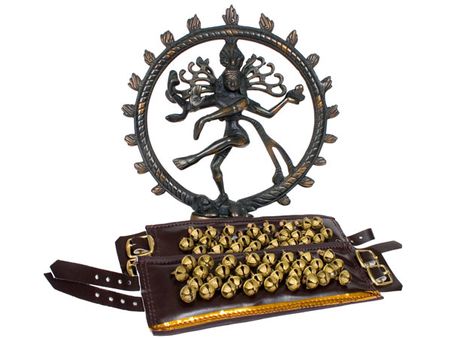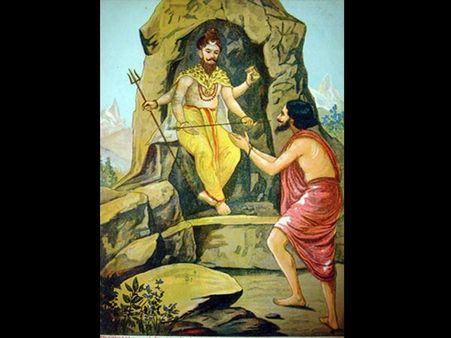Just In
- 4 hrs ago

- 4 hrs ago

- 8 hrs ago

- 14 hrs ago

Don't Miss
- Sports
 Pakistan vs New Zealand: PCB's Failure to Learn Lesson As Fans Continue To Suffer At Rawalpindi Cricket Stadium
Pakistan vs New Zealand: PCB's Failure to Learn Lesson As Fans Continue To Suffer At Rawalpindi Cricket Stadium - Finance
 1:10 Stock Split: Below Rs 10, Fertilizer Sector Turned Ex-Split; 8,282% Returns In 5 Years
1:10 Stock Split: Below Rs 10, Fertilizer Sector Turned Ex-Split; 8,282% Returns In 5 Years - Movies
 Pukaar Dil Se Dil Tak Promo: Sayli Salunkhe Impresses In First Video Of Sony TV Show, Details About Her Role
Pukaar Dil Se Dil Tak Promo: Sayli Salunkhe Impresses In First Video Of Sony TV Show, Details About Her Role - News
 Chinese President Xi Jinping Orders Biggest Military Reorganisation Since 2015
Chinese President Xi Jinping Orders Biggest Military Reorganisation Since 2015 - Education
 Exam Pressure Does Not Exist; Studying Punctually is Crucial; Says Aditi, the PSEB 2024 Topper
Exam Pressure Does Not Exist; Studying Punctually is Crucial; Says Aditi, the PSEB 2024 Topper - Automobiles
 Suzuki Swift Hatchback Scores 4 Star Safety Rating At JNCAP – ADAS, New Engine & More
Suzuki Swift Hatchback Scores 4 Star Safety Rating At JNCAP – ADAS, New Engine & More - Technology
 Dell Introduces AI-Powered Laptops and Mobile Workstations for Enterprises in India
Dell Introduces AI-Powered Laptops and Mobile Workstations for Enterprises in India - Travel
 Journey From Delhi To Ooty: Top Transport Options And Attractions
Journey From Delhi To Ooty: Top Transport Options And Attractions
The Various Forms Of Lord Shiva
Lord Shiva is prayed in various forms by the Shaivites, or the believers of Lord Shiva. Here we have listed some of the forms of Lord Shiva, which you must have come across. Read to know more.
Lord Shiva is one of the most important deities of the Hindu pantheon. The 'Shaivites' or the followers of Lord Shiva consider him to be the supreme power. 'Omkar' or the sound that existed before existence is said to be the origin of Lord Shiva.
Though the Hindu mythology is often conflicted when the topic of the first form of the almighty comes in, the Shaivites believe it to be that of Lord Shiva. As the first and the most powerful being to appear in the universe, Lord Shiva is formless, genderless and boundless.
Also Read: There are certain lesser-known facts about Lord Shiva that you must read!
Lord Shiva presides over the five elements found in the nature, which are earth, air, water, space and fire. All these forms of nature are thought to be combined in the Shiva Linga.
The Shiva Linga is the most common representation of Lord Shiva. There are a total of 64 forms of Lord Shiva mentioned in the Shiva Purana. Most of these forms are not known to the common man. Here we have listed the six most interesting forms of Lord Shiva. Continue reading.

Lingodbhava
Lingodbhava or ‘the immeasurable one' is the form of Lord Shiva which made its appearance on the Krishna Chaturdashi day of the Magha month. Lingodbhava manifested to show Lord Vishnu and Lord Brahma that Lord Shiva is the ultimate spiritual being. In mythology, Lingodbhava is described as an endless beam of light.
The images of Lingodbhava in temples show a four-armed figure standing upright. The figure holds an antelope, an axe in his upper arms. The other two arms are poised to bless his devotees. This image is usually found on the western walls of Shiva temples.

Nataraja
Nataraja or ‘the king of dance' shows Lord Shiva in his dancing form. Lord Shiva is considered to be the Lord of destruction and the form that represents the rhythm of the life and death cycle.
When Lord Shiva dances the dance of destruction, it is called the Tandavanritya and it has the essence of birth, death and rebirth. It is said that when the Lord performs the dance, lightning flashes, giant waves arise, venomous snakes bring forth their venom and fire consumes everything. When the Lord performs the dance of creation, it is called the Anandanritya. It makes the universe calm and prosperous.

Daksinamurti
Dakshinamurti, or the God of the south, is the Lord of wisdom and truth. The image of Dakshinamurti is featured on the southern wall of temples dedicated to Lord Shiva. The image shows the Lord seated on a pedestal under a banyan tree. His left leg is folded and the right leg dangles and rests on an ‘Apasmara - the demon'. His arms hold a trident, a snake and a palm leaf. His right forearm is adorned with the auspicious chinamudra.

Ardhanarishwara
Lord Shiva and Goddess Shakti appear in the Ardhanarishwara form to depict the creation of life. The form is usually shown as a standing figure that is half female and half male. It teaches the world that the male and female forces are complementary and that neither is the greater sex.

Gangadhara
The word Gangadhara translates as the one who wears or holds Ganga. It is said that when King Bhagiratha awaited the decent of Goddess Ganga from the heavens, she arrogantly said that she would come down with such force that the earth would be destroyed. On the request of Bhagiratha, Lord Shiva caught Goddess Ganga in his dreadlocks and only let her trickle onto the earth as the river Ganga. And this way, Goddess Ganga was freed from her arrogance.

Bhikshatana
In literal translation, the word Bhikshatana refers to the act of begging. But the Bhikshatana form of Lord Shiva is to remove arrogance and ignorance. Lord Shiva is depicted in a nude and provocative form. He is in the form of a four-armed saint holding the trident, a damaru and a skull cap in each of his three hands. His right forearm is shown feeding a doe.
-
 yoga spiritualitySawan 2023: Which Is The Biggest Temple Of Shiva In India?
yoga spiritualitySawan 2023: Which Is The Biggest Temple Of Shiva In India? -
 yoga spiritualitySawan 2023: 5 Bhog Items You Must Offer To Lord Shiva During Shravan Month
yoga spiritualitySawan 2023: 5 Bhog Items You Must Offer To Lord Shiva During Shravan Month -
 yoga spiritualitySawan 2023: Deity Of Mandi's Panchvaktra Temple Dedicated To Lord Shiva Has An Interesting Feature
yoga spiritualitySawan 2023: Deity Of Mandi's Panchvaktra Temple Dedicated To Lord Shiva Has An Interesting Feature -
 astrologySawan 2023: Gifts For Shiva Devotees As Per Your Zodiac Sign
astrologySawan 2023: Gifts For Shiva Devotees As Per Your Zodiac Sign -
 faith mysticismThe Nine Most Famous Avatars Of Lord Shiva
faith mysticismThe Nine Most Famous Avatars Of Lord Shiva -
 insyncAmarnath Yatra 2022: Date, Registration, Helicopter Booking Cost, Medical Form, Age Limit - Everything To Know
insyncAmarnath Yatra 2022: Date, Registration, Helicopter Booking Cost, Medical Form, Age Limit - Everything To Know -
 faith mysticismHere’s Why Lord Shiva Has Three Eyes And The Significance Of The Third Eye
faith mysticismHere’s Why Lord Shiva Has Three Eyes And The Significance Of The Third Eye -
 faith mysticismShri Shiv Chalisa Lyrics in English, Meaning, Chanting, Importance and Benefits
faith mysticismShri Shiv Chalisa Lyrics in English, Meaning, Chanting, Importance and Benefits -
 festivalsSawan Shivratri 2022: With These Rituals, You Can Please Lord Shiva On This Day
festivalsSawan Shivratri 2022: With These Rituals, You Can Please Lord Shiva On This Day -
 faith mysticismBenefits And Rules Of Chanting Maha Mrityunjay Mantra
faith mysticismBenefits And Rules Of Chanting Maha Mrityunjay Mantra -
 festivalsSawan Somvar Vrat 2019: Dates, Significance And Benefits
festivalsSawan Somvar Vrat 2019: Dates, Significance And Benefits -
 faith mysticismAmavasya, Eclipse & A Saturday! The One Tree That Can Save You From All Ill Effects
faith mysticismAmavasya, Eclipse & A Saturday! The One Tree That Can Save You From All Ill Effects


 Click it and Unblock the Notifications
Click it and Unblock the Notifications



